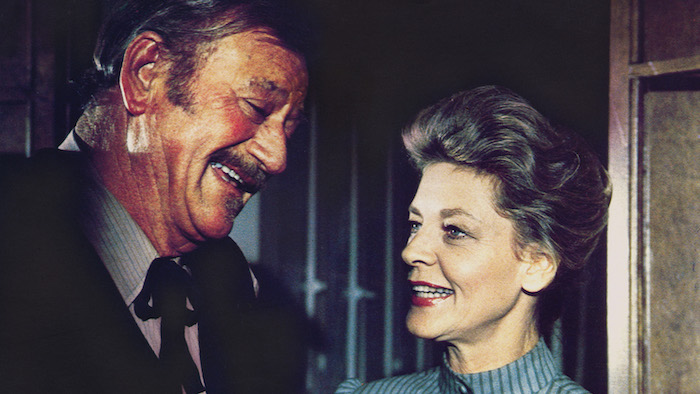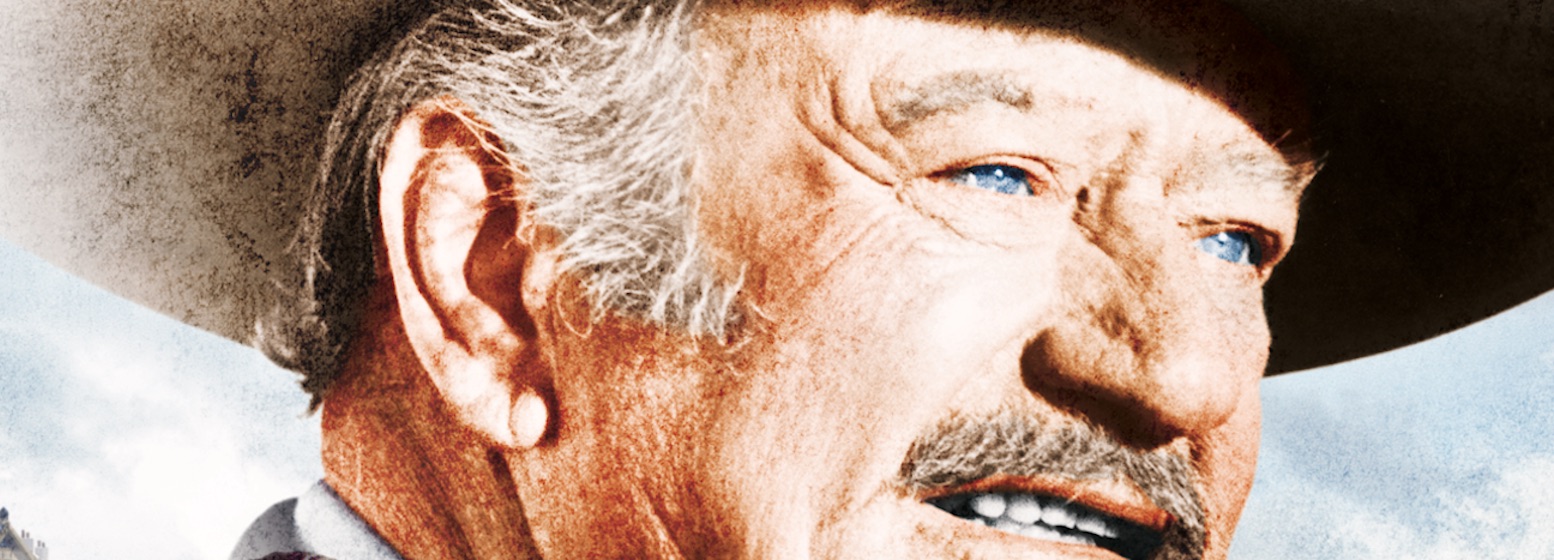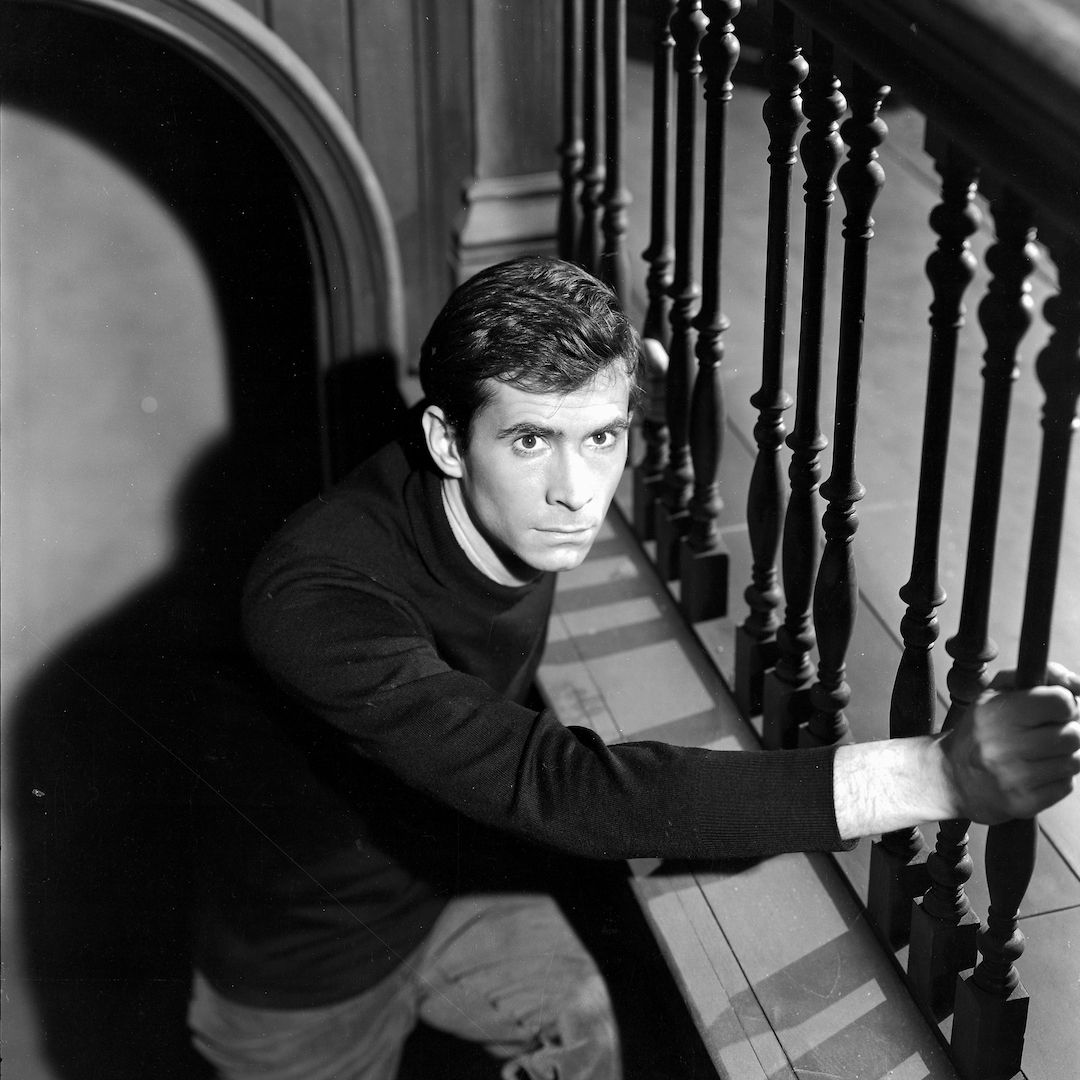The Shootist: John Wayne’s Claustrophobic Last Film
May 13, 2020 By Go BackJohn Wayne was disappointed by The Shootist.
He didn’t like the fact he hadn’t been offered the role of the aging and ailing gunfighter J.B. Books first – that honour had been taken by George C. Scott, Clint Eastwood and Paul Newman. He wasn’t happy that the movie’s budget was so low, forcing the screenwriters to create an indoor chamber piece. And he was disappointed by Don Siegel, the veteran and crafty B-movie director whom Wayne had only approved as director because he wished he’d taken Eastwood’s role in Dirty Harry.
Every bit as stubborn and unreasonable as Wayne could be, Siegel seemed determined to make what would be Wayne’s final movie – though that was not the intention at the time – as intimate and claustrophobic as a widow’s parlour, and Wayne bristled at the confinement. He wanted the wide open spaces upon which he had risen as the nation’s greatest and most iconic cowboy star, but Siegel had other ideas: he was making a movie about a man on the brink of death confronted by his past. Maybe Wayne was thinking something along the lines of The Wild Bunch. Instead, he found himself in the old frontier version of Ingmar Bergman’s Wild Strawberries.
Contrary to rumour and myth, Wayne wasn’t dying of cancer when he made the movie. True, he was stricken by the flu, stomach ailments and the constant possibility that the cancer he’d beaten in 1969 would come back, which it did, finally and fatefully in 1979. His discomforts were real, and you can feel the weight of his body as he shuffles around the hallways of the rooming house – run, rather fastidiously but indulgently by Lauren Bacall – where he spends his final week. If anyone found the making of the movie something of an ordeal, it was James Stewart, playing the doctor who would administer the old gunfighter’s final prognosis. Stewart, who’d last appeared with Wayne 15 years earlier in John Ford’s The Man Who Shot Liberty Valance, was painfully hard of hearing at the time, and the interior sets and sound stages made hearing his cues almost impossible. He too wished the production would move outside once in a while.

But of course it couldn’t. Smartly, the screenwriters Scott Hale and Miles Hood Swarthout had deliberately written a chamber piece in which past glories were restricted only to the pre-credit sequence of a younger Wayne in Rio Bravo and Hondo. And that’s all that was needed; the past is everywhere in the widow’s rooming house. J.B. Books’ final days are spent in (when you come right down to it) the real final frontier: the kitchen, run by a widow. Truly, the old west ends here – not the Pacific Ocean, but the doorway to the kitchen.
And note that the final shootout, in which Books takes on three aspiring challengers, takes place not on the streets of Carson City, but in a saloon. I can’t think of another western that has so resolutely and effectively barricaded itself against the great outdoors.
Wayne was also disappointed by The Shootist’s modest performance at the box office. His studio, Paramount, was investing almost all of its attention and money into the forthcoming King Kong remake, and The Shootist suffered from a lack of promotion. It disappeared quickly at summer’s end, only to begin the process of belated recognition as years passed. Whether or not the story was confined to interiors by design or budget, the fact is it worked. We didn’t need the open frontier to remind us where Books had ridden in from. It was in every gesture, sigh, cough and shuffle that Books carried, and it was an inescapable part of his myth. His final confinement in the widow’s rooming house felt only reasonably unnatural and final. When the likes of J.B. Books takes to bed, the old west goes with him.
It isn’t clear whether or not Wayne made his peace with Siegel’s movie before he died, but it ultimately doesn’t matter. As a final act of a career that virtually defined the hopes, fears and dreams of America in the mid-twentieth century, The Shootist is perfect: a chamber piece about a life too big to be contained indoors.











 Follow us on Instagram
Follow us on Instagram